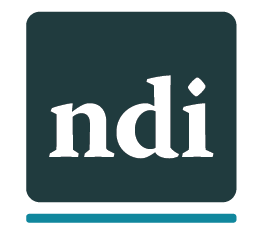Student Loans
What You Need to Know about Student Loans
STUDENT LOAN PAYMENTS RESTARTED – Student loan interest resumed Sept. 1, 2023. Payments were due again starting October, 2023.
This page will help you prepare to make student loan payments and explain how you can have your federal student loans forgiven, canceled or discharged, if eligible. The terms “forgiven”, “canceled”, and “discharged” mean essentially the same thing.
Why the federal student loan relief ended?
The CARES Act provided broad relief for federal student loan borrowers. On March 27, 2020, all payments on federally held student loans were paused and the interest rate on federal student loans set to zero percent. That relief has ended and interest may again be added to student loans . beginning September. 1, 2023, and payments were due again starting October, 2023. You should have received a billing statement or other notice at least 21 days before your payment was due. If you don’t get a billing statement at least 21 days before your payment due date, it is important to contact your loan servicer.
What do I need to do now as the student loan payment payments resume?
Before payments resume, the Department of Education (DOE) advises that you:
- Update your contact information with your loan servicer and in your StudentAid.gov profile
- Get info about your next payment: when it is due, upcoming interest and the amount due
- Make sure you have the best repayment plan for you! Use the DOE’s Loan Simulator to explore options for repaying your student loans
- If right for you, the SAVE Plan can offer lower monthly loan payment options. Explore options, learn more and apply for the SAVE plan by visiting StudentAid.gov
- Understand what happens if you don’t repay your loan
- Avoid student loan scams
- Stay in the know by signing up to receive Federal Student Loan Borrower Updates from the Department of Education
What can I do if I am not financially able to make my student loan payments?
Paying off student debt can be scary and confusing. If you do not feel financially secure enough to make your student loan payments, talk with your loan provider about repayment plan options. Instead of having a traditional repayment plan, you might qualify for an Income-Driven Repayment Plan, like Pay As You Earn Repayment (PAYE); Income-Based Repayment (IBR); and Income-Contingent Repayment (ICR) Plans.
An important note: Before switching from a traditional repayment plan to an income-driven repayment plan, make sure that you understand how making lower payments might affect your loan interest and the length of time that you will need to make payments.
What happens if I default on my loan?
Collections, including offset and garnishment, on most loans stay paused through September 30, 2024 due to the Fresh Start program. Eligible borrowers can use this program to easily get their loans out of default. You must enroll in the program online, by phone, or by mail. The loan will return to “in repayment status” and the default will be removed from your credit report. You will have the opportunity to be put on a repayment plan customized to your income.
Is there someone to contact if I have questions about student loan debt relief, repayment plans or other questions?
Yes, whether you are a parent or a student there are contact centers available to answer your questions via phone, chat or email. Please visit the Federal Student Aid Contact Us page for a list of all contact centers.
Where do I find a list of forms to help me apply for loan relief or discharges I may be eligible to receive?
A list of financial student aid forms are available from the Office of the U.S. Department of Education. You may download the forms manually, but if the form is available electronically and a link is provided, it is highly recommend to complete the online version for efficiency and faster processing and response times.
Is there a way to discharge my federal student loan if I have a documented disability?
Yes. You may qualify for a total and permanent disability discharge of your federal student loans which relieves you from having to repay a William D. Ford Federal Direct Loan (Direct Loan) Program loan, Federal Family Education Loan (FFEL) Program loan, and/or Federal Perkins Loan (Perkins Loan) Program loan or complete a TEACH Grant service obligation on the basis of your total and permanent disability. Before your federal student loans or TEACH Grant service obligation can be discharged, you must provide information to the Department to show that you are totally and permanently disabled. The Department will evaluate the information and determine if you qualify for a TPD discharge.
The final rule provides additional pathways for borrowers to receive a discharge based upon total and permanent determination by the Department of Veterans Affairs, Social Security Administration (SSA), or a licensed medical professional. Each option has specific requirements and supporting documentation.
Important Tax Information
Loan amounts discharged due to Total Permanent Disability are not considered taxable income by the Internal Revenue Service (IRS) for federal tax purposes. However, certain states may consider the discharged amount to be income for state tax purposes. Check with your state tax office or a tax professional before filing your state tax return.
What are some ways to qualify for loan forgiveness, cancellation or discharge?
The most common way people apply to have their student loans forgiven is through the Public Service Loan Forgiveness Program (PSLF program). If you work in public service (federal, U.S. Military, state, local, or tribal) or certain non-profit organizations, if you work as a nurse, doctor or other medical professional for a non-profit agency, you might be eligible for the Public Service Loan Forgiveness (PSLF) Program.
The PSLF Program forgives the remaining balance on your Direct Loans after you have made 120 qualifying monthly payments under a qualifying repayment plan while working full-time for a qualifying employer. However, you will need to take steps to apply. Use the Public Service Loan Forgiveness (PSLF) Help Tool to walk you through the steps to determine if you qualify, how to apply and meet all the requirements.
You may also qualify for loan forgiveness, cancellation or discharge and can find eligibility information under these other programs:
- Teacher Loan Forgiveness | Federal Student Aid
- Forgery Discharge | Federal Student Aid
- Discharge in Bankruptcy | Federal Student Aid
- Discharge due to death
If you are in a short-term financial bind, you may qualify for a deferment or forbearance where you can temporarily suspend your payments.
UPDATE: On March 21, 2024 President Biden announced the cancellation of student loans for an additional 78,000 public service workers—teachers, nurses, firefighters, and more – through the PSLF program. Borrowers can go to the student aid website to apply.
Get resources right to your inbox!
The Financial Resilience Center was developed by National Disability Institute with generous funding from the Wells Fargo Foundation.



